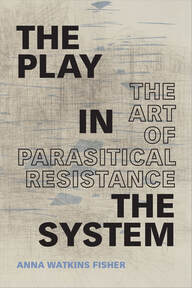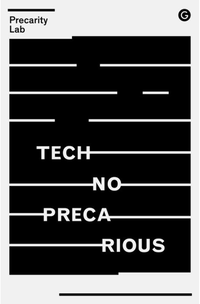
Safety Orange
University of Minnesota Press (Forerunners), 2021
Safety Orange first emerged in the 1950s as a bureaucratic color standard in technical manuals and federal regulations in the United States. Today it is most visible in the contexts of terror, pandemic, and environmental alarm systems; traffic control; work safety; and mass incarceration. In recent decades, the color has become ubiquitous in American public life—a marker of the extreme poles of state oversight and abandonment, of capitalist excess and dereliction. Its unprecedented saturation encodes the tracking of those bodies, neighborhoods, and infrastructures judged as worthy of care—and those deemed dangerous and expendable.
Here, Safety Orange provides an interpretive key for theorizing the uneven distribution of safety and care in twenty-first-century U.S. public life and for pondering what the color tells us about neoliberalism’s intensifying impact often hiding in plain sight in ordinary and commonplace phenomena.
Available here. | Open access version here.

The Play in the System The Art of Parasitical Resistance
Duke University Press, 2020
What does artistic resistance look like in the twenty-first century, when disruption and dissent are easily co-opted and commodified by marketing strategies? In The Play in the System, Anna Watkins Fisher locates the possibility for resistance in artists who embrace parasitism—tactics of complicity that effect subversion from within hegemonic structures. Fisher tracks the ways in which artists on the margins—from hacker collectives to feminist writers and performers—have willfully abandoned the radical scripts of opposition and refusal long identified with anti-capitalism and feminism. The provocative and challenging works of artist-activists Ubermorgen, Robin Hood Cooperative, Nuria Guell, Kenneth Pietrobono, Chris Kraus, Sophie Calle, Ann Liv Young, Anya Liftig, Lauren Barri Holstein, Kate Gilmore, and Roisin Byrne reveal the potential and limits of this compromised praxis of resistance. Space for resistance is found instead in the mutually, if unevenly, exploitative relations between dominant hosts giving only as much as required to appear generous and parasitical actors taking only as much as they can get away with. The irreverent and often troubling works that result raise necessary and difficult questions about the conditions for resistance and critique under neoliberalism today.
Available here. | Open access version here.

New Media, Old Media
A History and Theory Reader (2nd edition)
Routledge, 2015
Eds. Wendy Hui Kyong Chun and Anna Watkins Fisher (with Thomas Keenan)
This much-expanded and updated second edition of New Media, Old Media brings together original and classic essays that explore the tensions of old and new in digital culture. Touching on topics including media archaeology, archives, software studies, surveillance, big data, social media, organized networks, digital art, and the Internet of Things, this newly revised critical anthology is essential reading for anyone studying the cultural impact of new and digital media.
Available here.

Technoprecarious
Goldsmiths/MIT Press 2020
Precarity Lab
(Lisa Nakamura, Anna Watkins Fisher, Silvia Lindtner, Ivan Chaar-Lopez,
Cengiz Salman, McKenzie Wark, Kalindi Vora, Jackie Wang, Cass Adair, Cindy Lin, with Meryem Kamil)
Technoprecarious advances a new analytic for tracing how precarity unfolds across disparate geographical sites and cultural practices in the digital age. Digital technologies—whether apps like Uber, built on flexible labor, or platforms like Airbnb that shift accountability to users—have assisted in consolidating the wealth and influence of a small number of players. These platforms have also exacerbated increasingly insecure conditions of work and life for racial, ethnic, and sexual minorities; women; indigenous people; migrants; and peoples in the global south. At the same time, precarity has become increasingly generalized, expanding to include
even the creative class and digital producers themselves.
Precarity Lab is a research collective that focuses on the various forms of insecurity, vulnerability, and social and cultural exclusion that digital platforms produce and mediate.
Available here.
Technoprecarious
Goldsmiths/MIT Press 2020
Precarity Lab
(Lisa Nakamura, Anna Watkins Fisher, Silvia Lindtner, Ivan Chaar-Lopez,
Cengiz Salman, McKenzie Wark, Kalindi Vora, Jackie Wang, Cass Adair, Cindy Lin, with Meryem Kamil)
Technoprecarious advances a new analytic for tracing how precarity unfolds across disparate geographical sites and cultural practices in the digital age. Digital technologies—whether apps like Uber, built on flexible labor, or platforms like Airbnb that shift accountability to users—have assisted in consolidating the wealth and influence of a small number of players. These platforms have also exacerbated increasingly insecure conditions of work and life for racial, ethnic, and sexual minorities; women; indigenous people; migrants; and peoples in the global south. At the same time, precarity has become increasingly generalized, expanding to include
even the creative class and digital producers themselves.
Precarity Lab is a research collective that focuses on the various forms of insecurity, vulnerability, and social and cultural exclusion that digital platforms produce and mediate.
Available here.